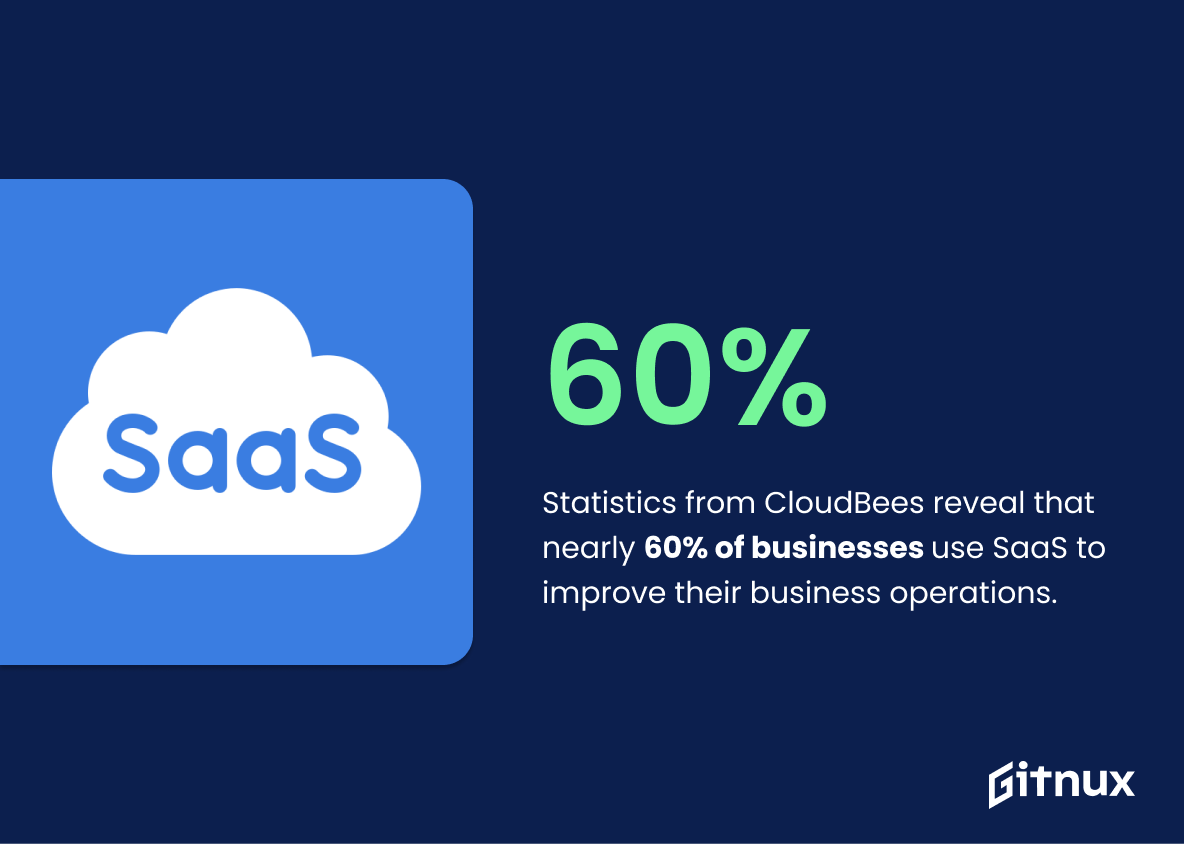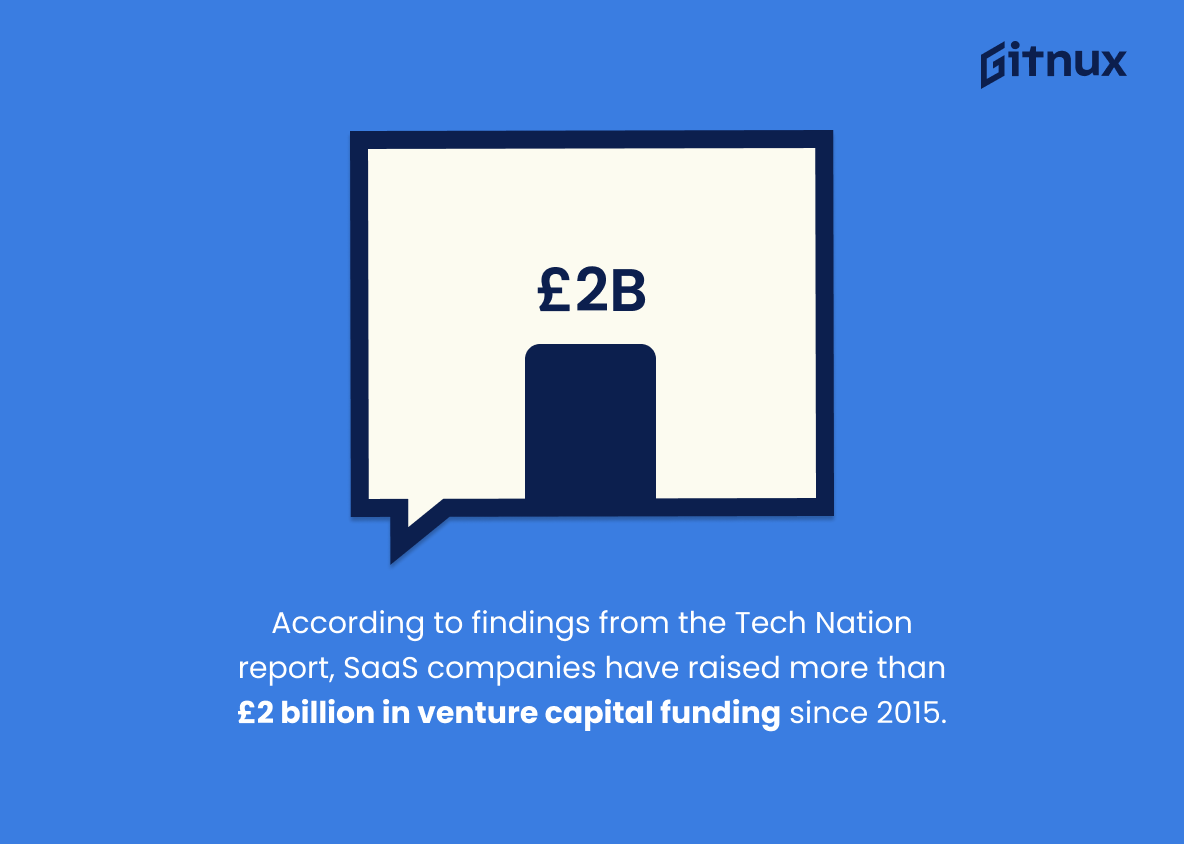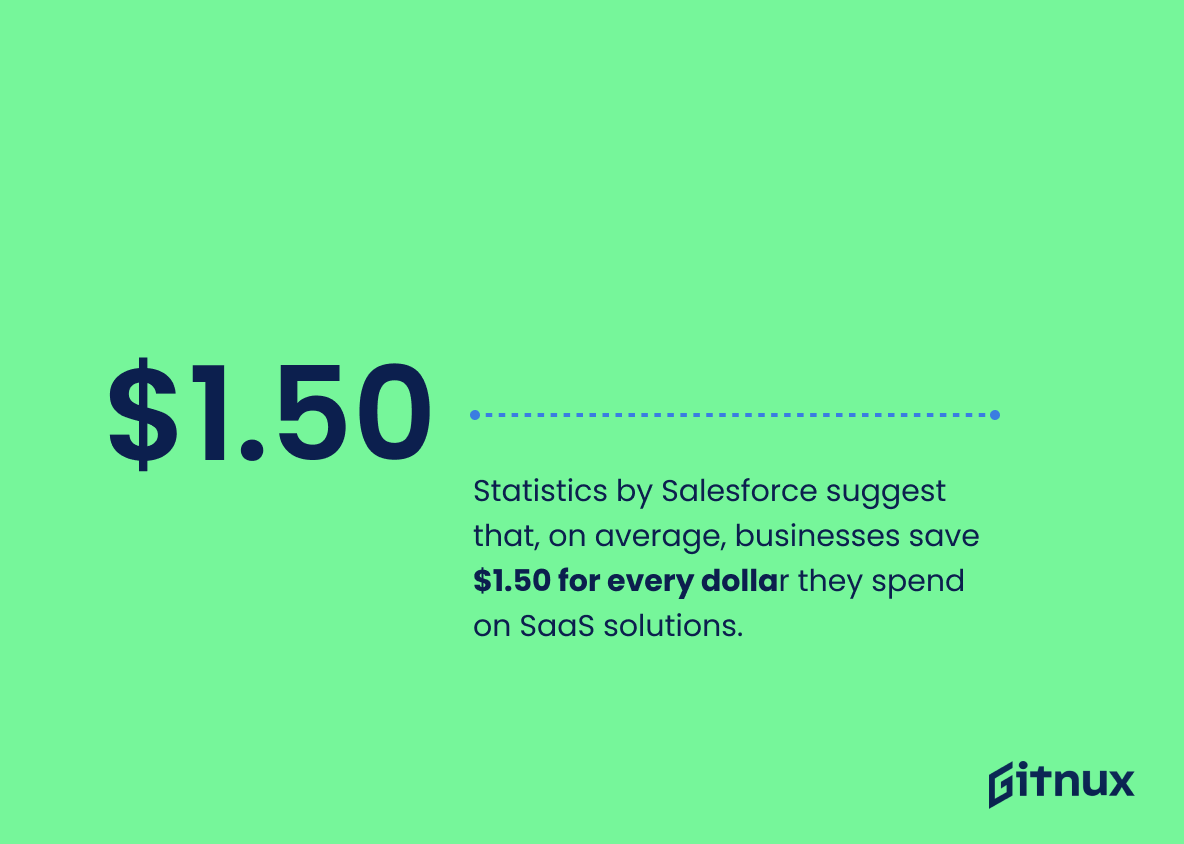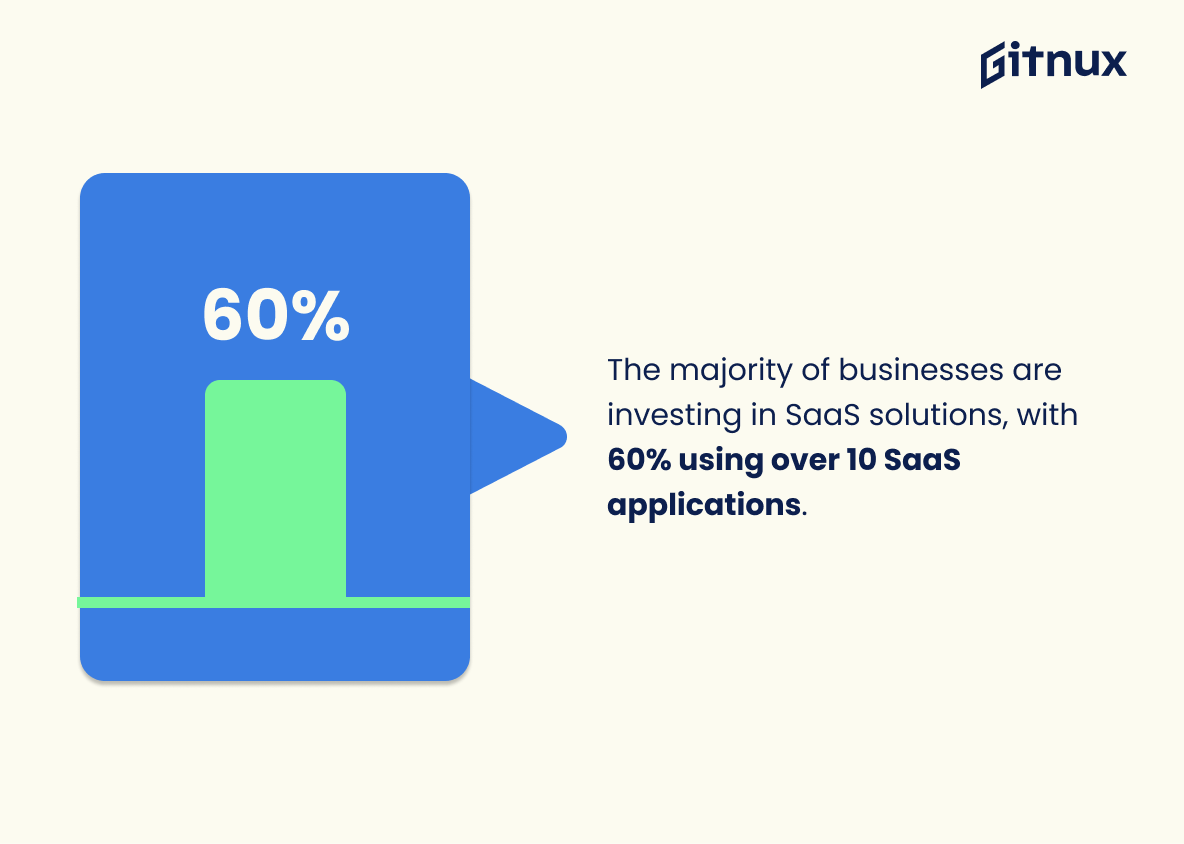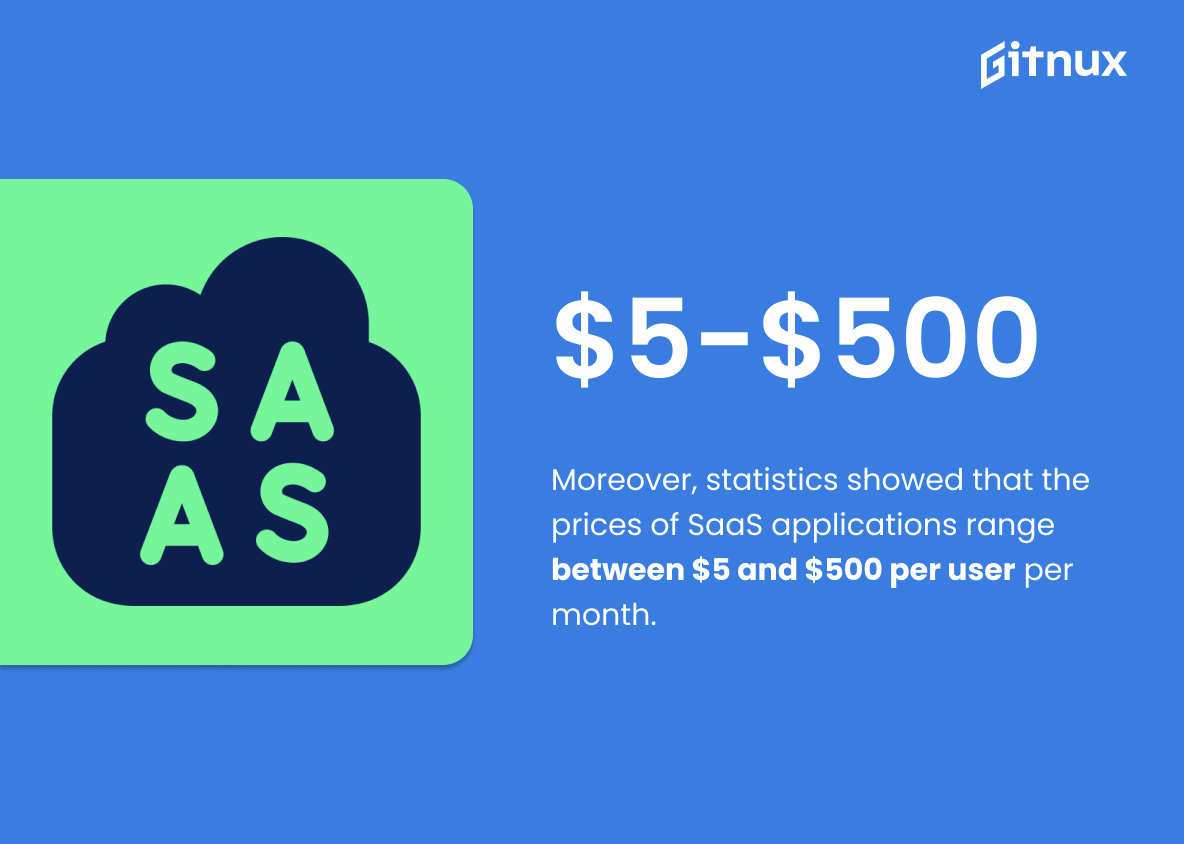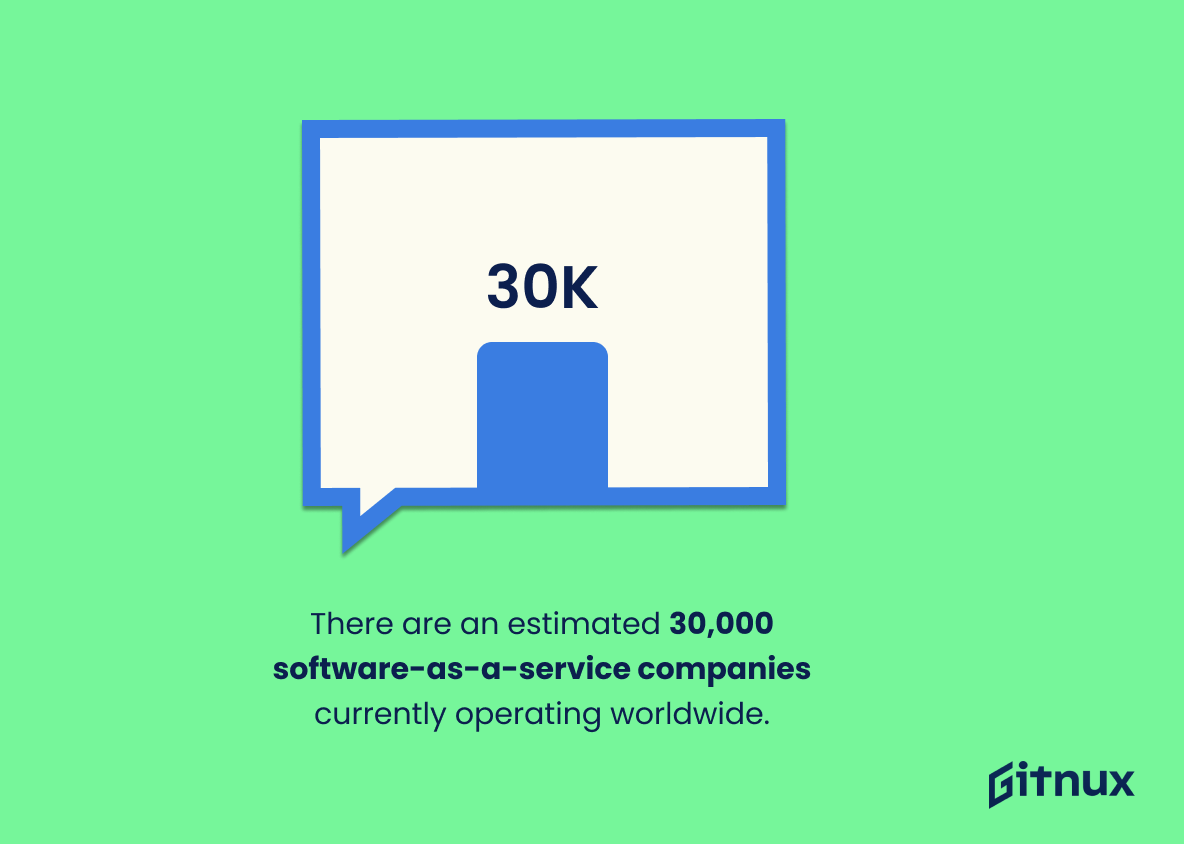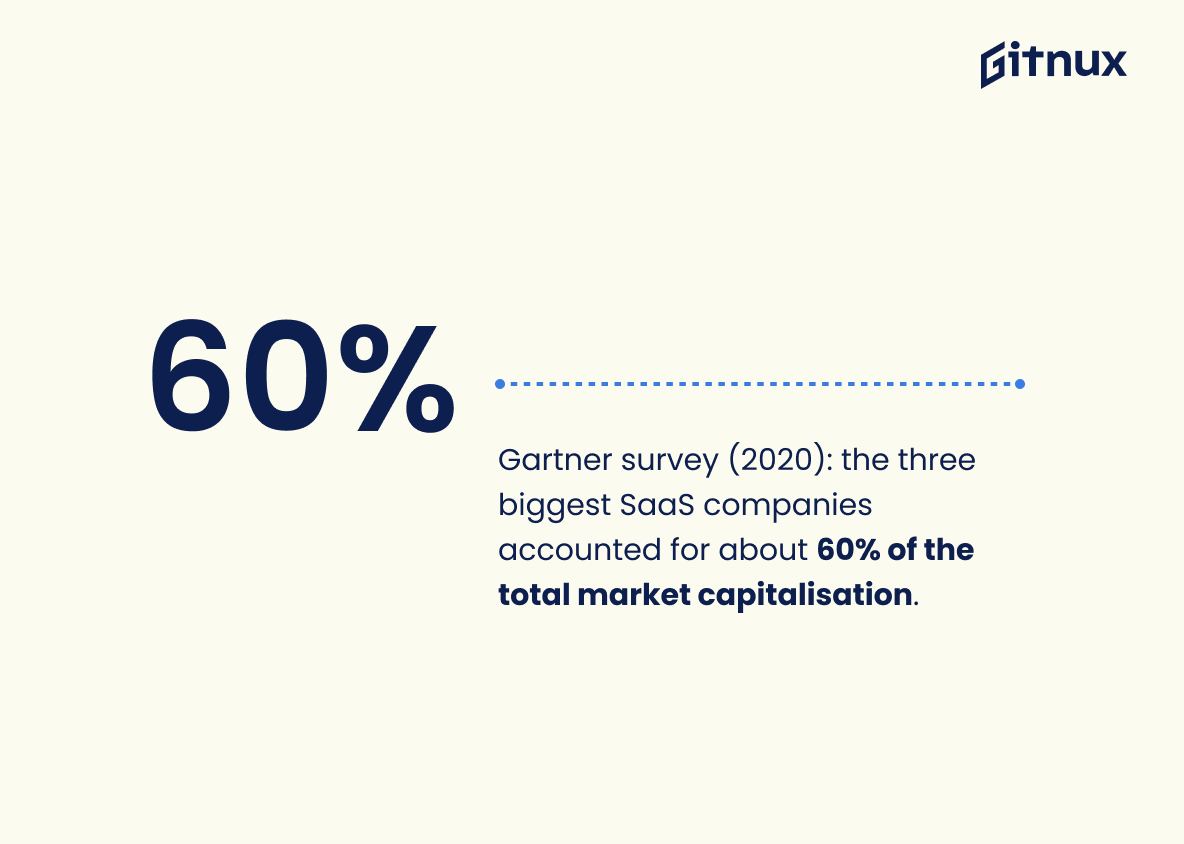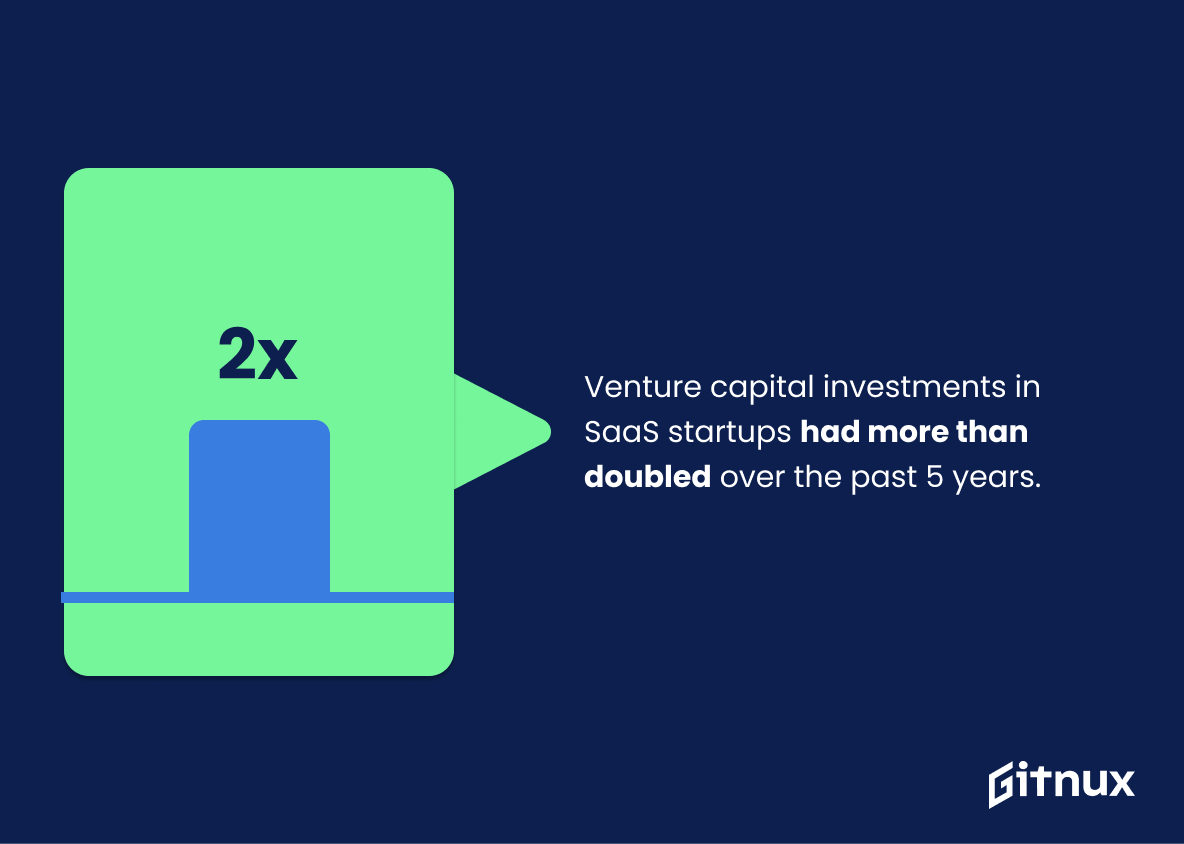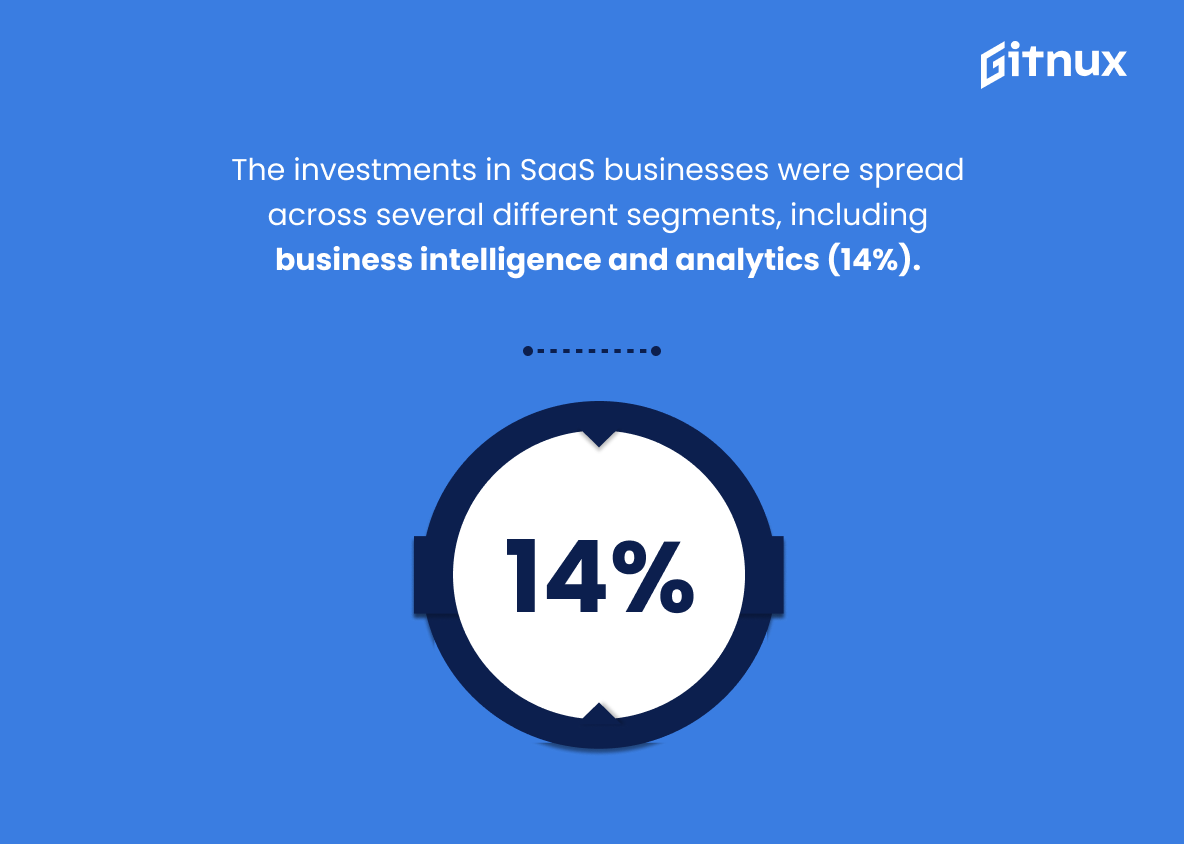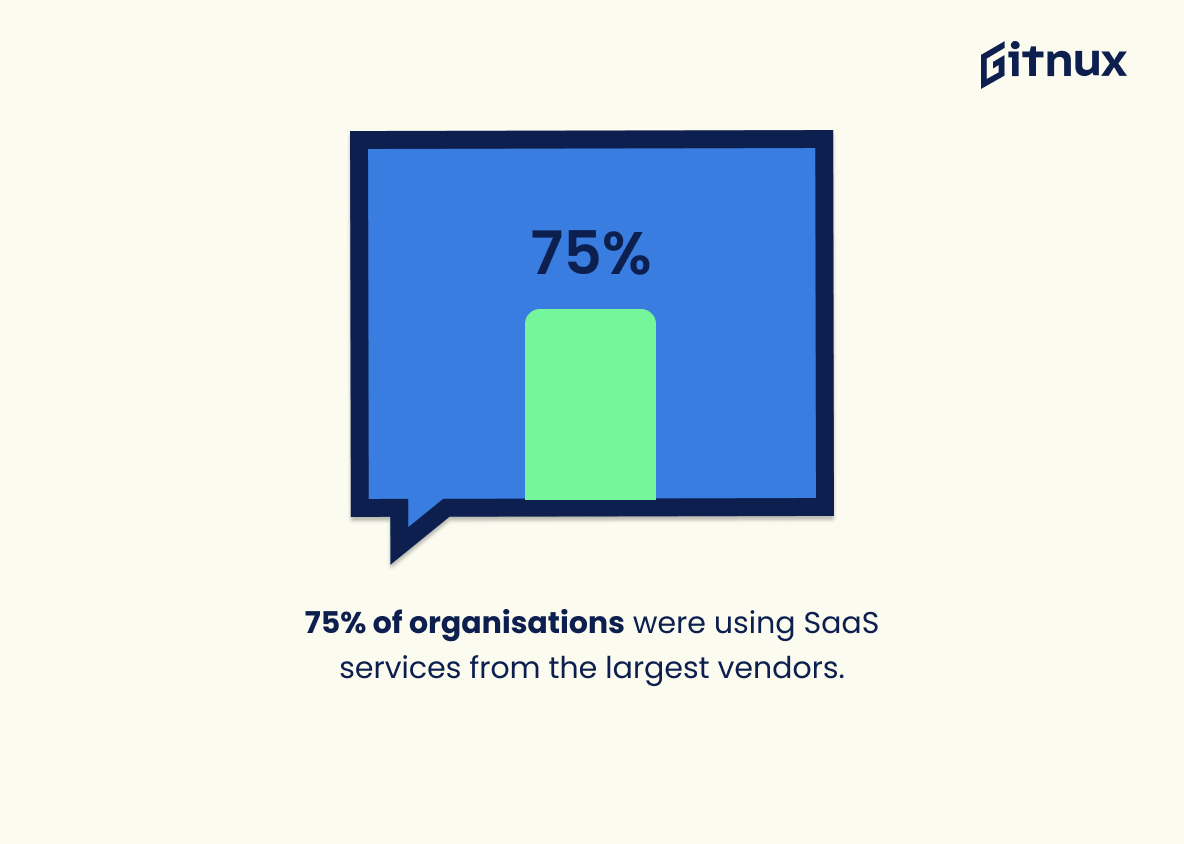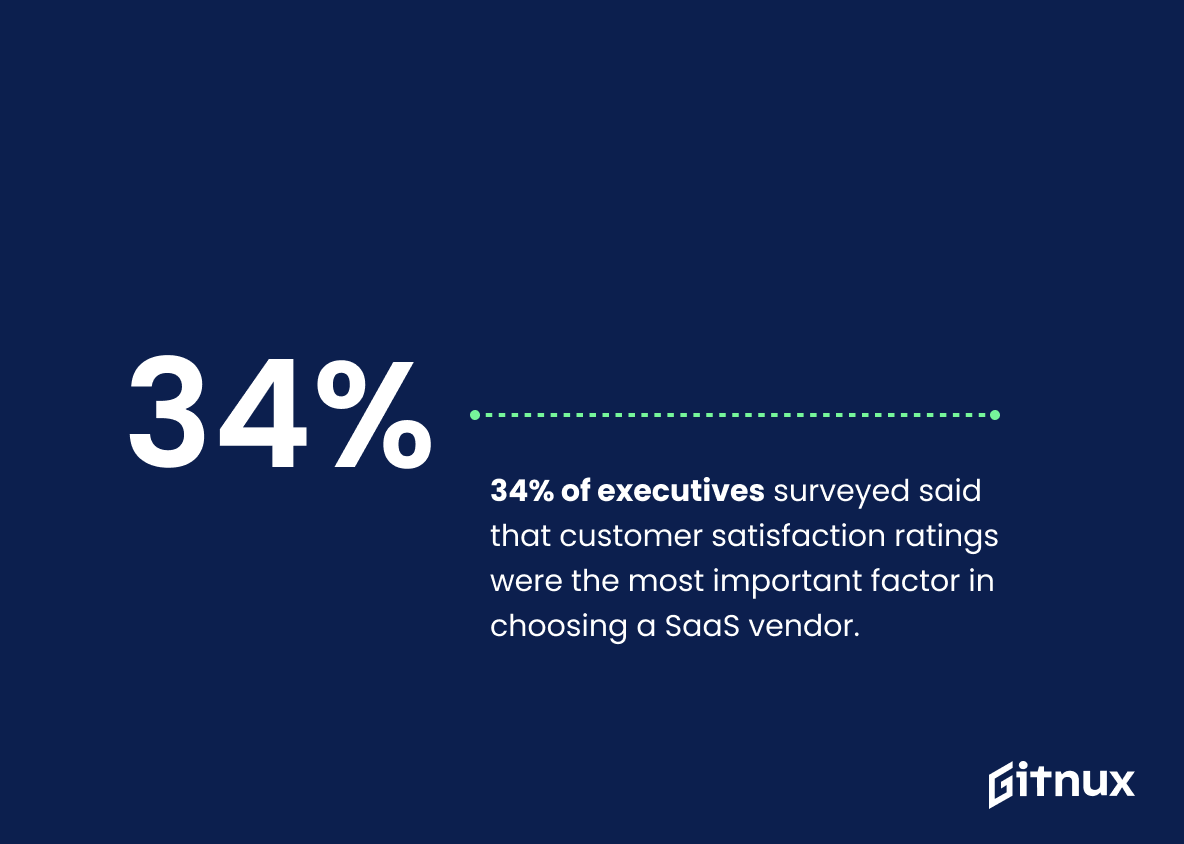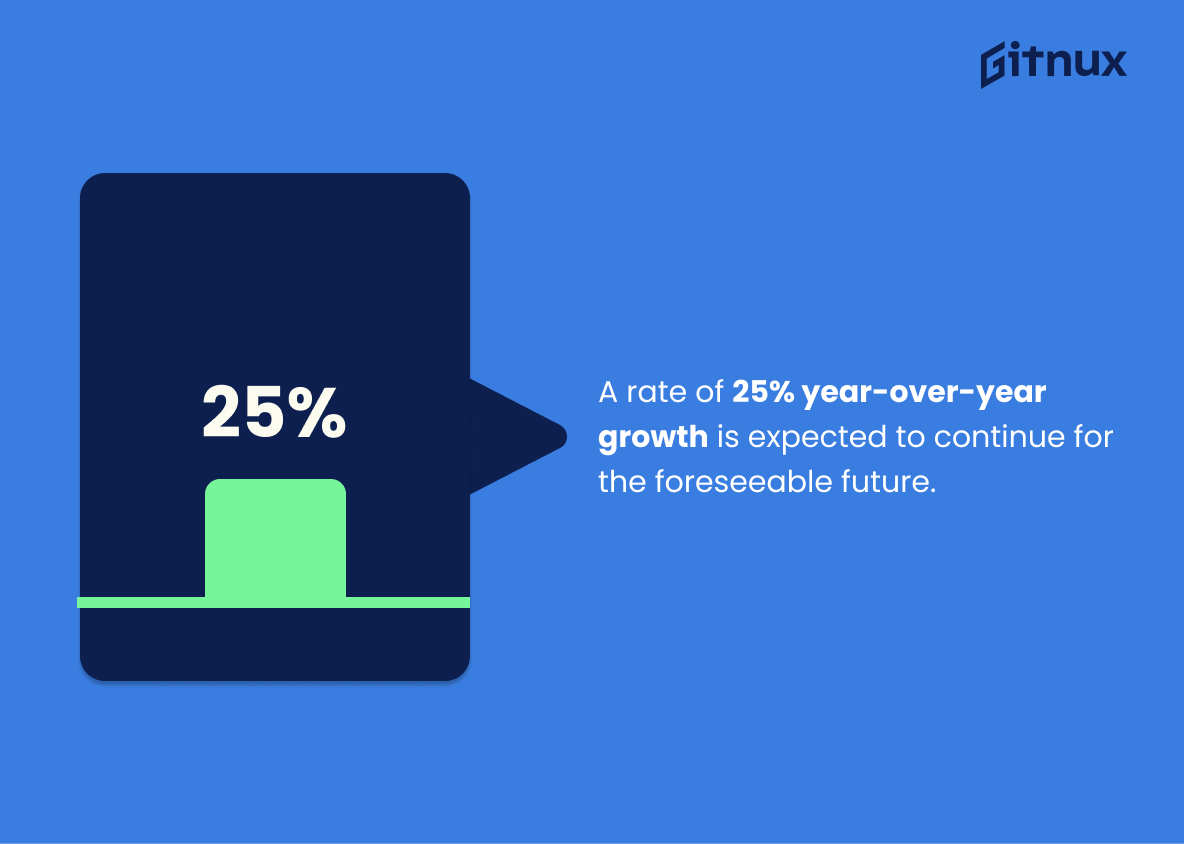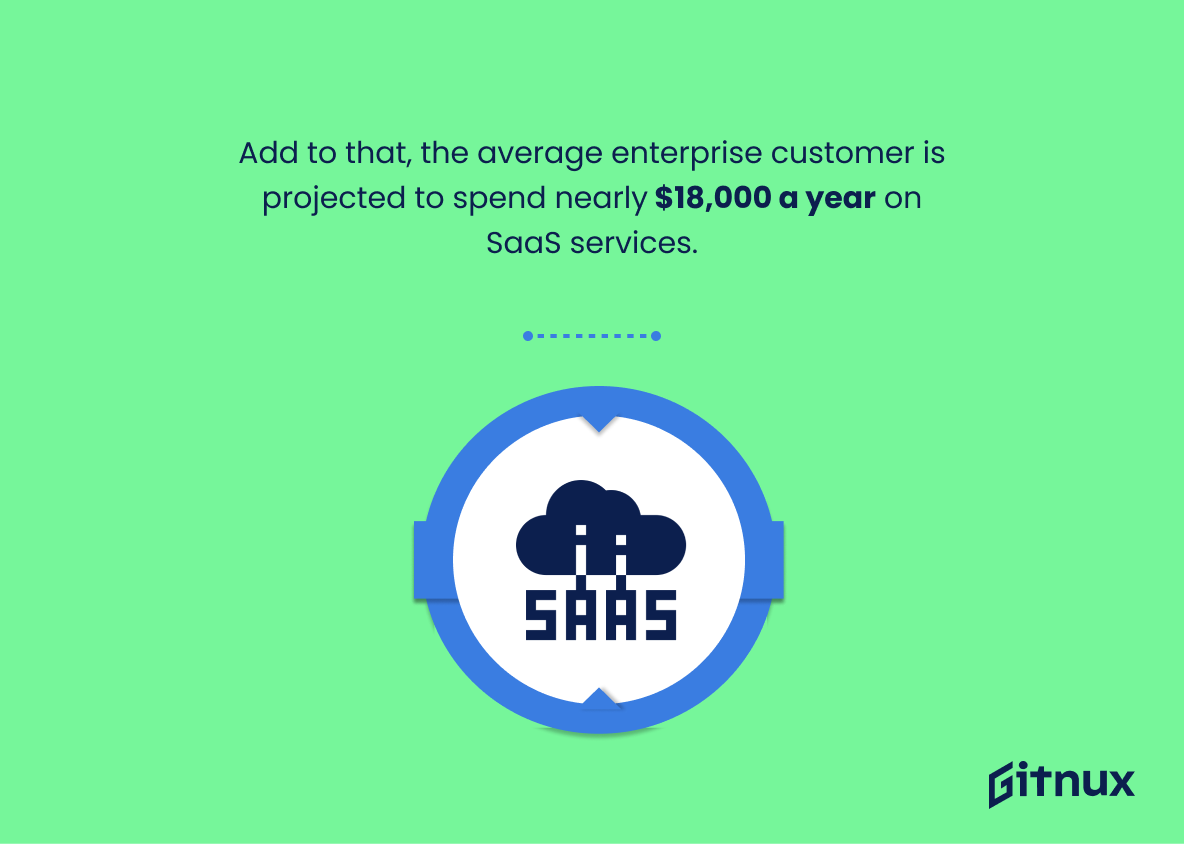Over the past several decades, the Software-as-a-Service (SaaS) market has seen tremendous growth, with the number of SaaS providers, products, and customers expanding at an exponential rate.
SaaS statistics are considered a valuable resource for understanding the current landscape of the SaaS market and tracking its development.
In addition to providing a concise overview of the current SaaS industry and reviewing some of the major SaaS statistics that show its expansion across the world and influence on businesses, the article will highlight the challenges that SaaS providers must overcome in order to remain successful and competitive.
SaaS: The Most Important Statistics
The United States has 8 times the number of SaaS companies as any other country.
53% of organizations have already implemented SaaS, while an additional 28% plan to implement SaaS in the near future.
SaaS General Statistics
SaaS statistics are growing significantly each year.
Statistics from CloudBees reveal that nearly 60% of businesses use SaaS to improve their business operations.
A survey found that 96% of companies are using at least one SaaS application and 78% of them are using more than 4.
According to findings from the Tech Nation report, SaaS companies have raised more than £2 billion in venture capital funding since 2015.
Another survey conducted by the Software & Information Industry Association (SIIA) revealed that the majority of SaaS companies generate between $100,000 and $5 million in annual revenue.
Statistics by Salesforce suggest that, on average, businesses save $1.50 for every dollar they spend on SaaS solutions.
SaaS Market Size Statistics
The SaaS market size is estimated to be over $110 billion and is projected to reach $195.8 billion by 2023, according to Statista.
It has been found that the majority of businesses are investing in SaaS solutions, with 60% of respondents reporting they use more than 10 SaaS applications.
A survey conducted by AppDirect revealed that 72% of businesses plan to invest more in SaaS solutions, with 73% expecting to increase their spending by at least 5%.
In the same scope, another survey done by McKinsey found that 73% of businesses have seen a 20-40% increase in productivity due to the use of SaaS.
Further, 86% reported improved collaboration, 81% experienced faster problem resolution, and 68% saw enhanced customer satisfaction thanks to their investment in SaaS services.
Moreover, statistics showed that the prices of SaaS applications range between $5 and $500 per user per month, meaning businesses of any size can benefit from these advanced services. regardless of their budget.
In Germany, a study reported that almost 40% of small and medium-sized businesses adopted SaaS services, whereas, in a separate survey in the US, the figure was much higher, with almost 90% of SMBs leveraging SaaS to optimise their operations.
Statistics On SaaS Companies
The popularity of SaaS services is expanding rapidly across the globe.
There are an estimated 30,000 software-as-a-service (SaaS) companies currently operating worldwide.
Statista reports that the top countries for SaaS companies are the US with 15,000 and the UK with 2,000, followed by Canada with 1,000, Germany with 1,000, France with 939, India with 813, and China with 663.
These companies range from large, well-known companies such as Dropbox and Adobe Creative Cloud to small start-ups.
In addition, all these companies have a number of customers that reached 5.3 billion in 2020, with that number expected to rise as more companies embrace cloud computing services.
SaaS Market Capitalisation
The SaaS industry is characterised by quick growth and consolidation, with some of the largest companies by market capitalisation growing at a staggering rate.
A survey conducted by Gartner in 2020 found that the three biggest software-as-a-service companies—Salesforce, Adobe, and Microsoft—accounted for about 60% of the total market capitalisation.
Another survey conducted by Deloitte revealed that the top 10 SaaS companies had a combined market capitalisation of over $1.5 trillion, making them some of the largest companies in the world.
The National Venture Capital Association’s (NVCA) survey results found that venture capital investments in SaaS startups had more than doubled over the past 5 years, with over $24 billion invested since 2015.
Further, the NVCA survey found that SaaS startups were one of the fastest-growing venture capital investments, with an average annual growth rate of 12,6%.
SaaS Segments
SaaS is classified into several segments, such as consumer, enterprise, and government-focused products and services, each with its own statistics and analysis.
A survey found that the investments in SaaS businesses were spread across several different segments, including business intelligence and analytics (14%), customer experience (13%), security (11%), and mobile services (10%).
Statistics from 400 venture capital firms in 2020 revealed that investments in SaaS businesses were primarily focused on enterprise and government-focused products and services, with enterprise software alone representing 35% of total investments.
Further, the same survey revealed that investments in consumer-focused SaaS products and services were relatively limited, representing only 18% of all investment.
SaaS Vendors and Revenue Forecasts
Forrester Research conducted in 2021 revealed that when it comes to the SaaS market, larger vendors have been dominating the investments.
Further, a survey of more than 6,000 organisations found that 75% of those organisations were using SaaS services from the largest vendors.
Another survey of the same 6,000 organizations indicated that customer satisfaction with larger vendors was higher than with smaller vendors.
In addition, a survey of 500 executives revealed that the primary reason they chose to go with larger vendors was because of the perceived superior security and reliability of their services.
When choosing a SaaS vendor, it is important to consider the satisfaction ratings of their customers as well as their reputation for reliability and security.
A survey found that 34% of executives surveyed said that customer satisfaction ratings were the most important factor in choosing a SaaS vendor, and 32% said that reputation for reliability and security was the second-most important factor.
SaaS vendor revenues have been forecasted to increase dramatically over the coming years.
A rate of 25% year-over-year growth is expected to continue for the foreseeable future.
Moreover, it has been found that revenues are expected to reach $250 billion by the year 2024, a significant increase from the $140 billion reported in 2020.
Add to that, the average enterprise customer is projected to spend nearly $18,000 a year on SaaS services.
It is also expected that cloud computing will account for over 75% of all IT spending by 2024 due to its scalability and agility.
Top Countries for SaaS
It is interesting to note that the amount of money spent on SaaS services varies by country.
For instance, companies in the US spend an average of $20,000 a year on SaaS services, while companies in the UK spend around $17,500.
A survey found that in France, the average was even lower, at $15,400, while Asian countries were found to have the lowest expenditures, with companies in China spending an average of only $7,500 a year.
Another survey reported that the number of people who opt for SaaS in Germany has increased from 9% in 2016 to 18% in 2018. Whereas in Italy, the increase has been even more drastic, with the number of companies using SaaS increasing from 12% in 2016 to 25% in 2018.
These findings clearly show that there are marked differences in the way different countries and regions approach SaaS services.
SaaS Challenges
Despite the growing popularity of SaaS, there are a few challenges that companies have to face when using these services.
A survey conducted by Deloitte revealed that the most commonly cited challenges by companies were data security and privacy concerns (45%), integration issues (41%), a lack of control over IT processes (32%), and concerns regarding access to data in the event of service termination (29%).
Another survey, conducted by Forrester Research, revealed that companies have difficulty choosing the right SaaS product to meet their needs (39%), followed by a lack of internal expertise (25%), and difficulty estimating costs (22%).
Furthermore, Gartner revealed that the biggest challenge companies face with SaaS is finding vendors that can meet their specific needs (51%).
Supplementary Statistics
The average churn rate for SaaS companies was 15.11% in 2019.
This provides insight into how many customers were retained and how many customers left the company, giving an indication of the overall health of the business. By understanding the average churn rate, SaaS companies can better understand their customer base and make informed decisions about how to improve their services and retain more customers.
The SaaS market is predicted to grow at a Compound Annual Growth Rate (CAGR) of 12% between 2021 and 2026.
The SaaS market is set to experience significant growth in the near future. This makes it an important statistic to consider when discussing the current and future state of the SaaS industry.
73% of organizations say that nearly all of their apps will be SaaS by 2021.
The majority of organizations are recognizing the value of SaaS and are making the switch to this type of software. This is a clear sign that SaaS is becoming an increasingly important part of the modern business landscape and is likely to continue to grow in popularity in the coming years.
The average company spent $343,000 on SaaS applications in 2018.
Companies are increasingly investing in SaaS applications, which is a clear sign that they are recognizing the value of these applications and the potential they have to improve their operations. This statistic is a powerful reminder of the importance of SaaS applications and the impact they can have on businesses.
By 2022, 75% of all databases will be deployed or migrated to a cloud platform.
As more and more businesses move their databases to the cloud, it is clear that cloud-based solutions are becoming the go-to choice for data storage and management. This statistic is a clear indication that the future of data storage and management lies in the cloud, and that businesses should be prepared to make the switch in the near future.
In 2020, the global SaaS market reached a value of approximately $104.6 billion, up from $94.9 billion in 2019.
The industry is thriving and that more and more businesses are turning to SaaS solutions to meet their needs. This is an important indicator of the potential of the SaaS market and should be taken into consideration when discussing the future of the industry.
By 2021, 17% of the total enterprise applications market will be composed of SaaS applications.
SaaS applications are becoming increasingly sought after by businesses, and that they are likely to continue to be a major player in the enterprise applications market in the near future. This is an important point to consider when discussing the current and future state of the SaaS market.
By the end of 2021, 94% of workloads will be processed by cloud data centers.
The majority of workloads will be processed by them by the end of 2021. This is a significant milestone for the cloud computing industry, as it demonstrates the increasing reliance on cloud data centers for businesses and organizations. This statistic is especially relevant for a blog post about SaaS statistics, as it highlights the importance of cloud data centers for the success of SaaS businesses.
B2B spending on SaaS products is expected to exceed $100 billion per year by 2026.
Businesses are increasingly recognizing the value of SaaS products and are willing to invest in them. This is a clear indication that SaaS products are becoming an integral part of the business landscape and are here to stay. This statistic is a valuable insight for anyone looking to understand the current and future state of the SaaS market.
38% of companies work with a mix of on-premise and SaaS solutions.
More and more companies are recognizing the value of SaaS solutions and are incorporating them into their business operations. This is an important indicator of the potential of SaaS solutions and the impact they can have on businesses.
CRM is the largest SaaS application segment, accounting for 24% of the entire SaaS market.
This highlights the importance of CRM in the SaaS industry, and serves as a reminder of the potential for businesses to leverage the technology to improve customer relationships and drive growth. In a blog post about SaaS statistics, this statistic is a key indicator of the importance of CRM in the industry and should be included to provide a comprehensive overview of the SaaS market.
North America accounted for over 50% of the global SaaS market in 2020.
North America is a major player in the global SaaS market, and that the region is leading the way in terms of innovation and adoption of SaaS solutions. This statistic is a valuable insight for anyone looking to understand the current state of the SaaS market and the opportunities it presents.
51% of companies are using at least one stand-alone marketing automation software.
The majority of companies recognize the value of having a dedicated platform to manage their marketing efforts, and are investing in the technology to ensure their success. This is an important point to consider when discussing the current state of SaaS statistics, as it highlights the increasing demand for marketing automation solutions.
Around 27% of companies experienced a security breach involving SaaS applications in 2020.
With nearly a third of companies falling victim to a security breach, it is clear that the risks associated with SaaS applications are real and should not be taken lightly.
Conclusion
To conclude, SaaS services have gone far in becoming mainstream enterprise technology, with their associated benefits of improved productivity, scalability, and cost efficiency, and the future seems to be increasingly bright for them.
However, they come with their own set of challenges that need to be addressed carefully in order to make the most of the opportunities that SaaS offers.
References
Exploding Topics: “80+ SaaS Statistics and Trends (2023)”, cited in February 2023 (Source)
Exploding Topics: “How Many SaaS Companies Are There? (2023)”, cited in February 2023 (Source)
Ascendix: “How Many SaaS Companies Are There in the World and Where They Spend Their Money”, cited in February 2023 (Source)
Statista: “Public cloud Software as a Service (SaaS) revenue worldwide from 2016 to 2027”,cited in February 2023 (Source)
Statista: “Total size of the public cloud software as a service (SaaS) market from 2008 to 2020”, cited in February 2023 (Source)
Statista: “Leading SaaS providers by market capitalization worldwide as of June 2019”, cited in February 2023 (Source)
EQVISTA: “TOP PUBLIC SAAS COMPANIES BY MARKET CAP”, cited in February 2023 (Source)
Startupbonsai: “27+ Latest SaaS Statistics For 2023: The Definitive List”, cited in February 2023 (Source)
Ascendix: “How Many SaaS Companies Are There in the World and Where They Spend Their Money”, cited in February 2023 (Source)
Statista: “Public cloud software as a service (SaaS) market share worldwide in 2019 and 2020, by vendor”, cited in February 2023 (Source)
ZipDo, cited June 2023: Saas Statistics
